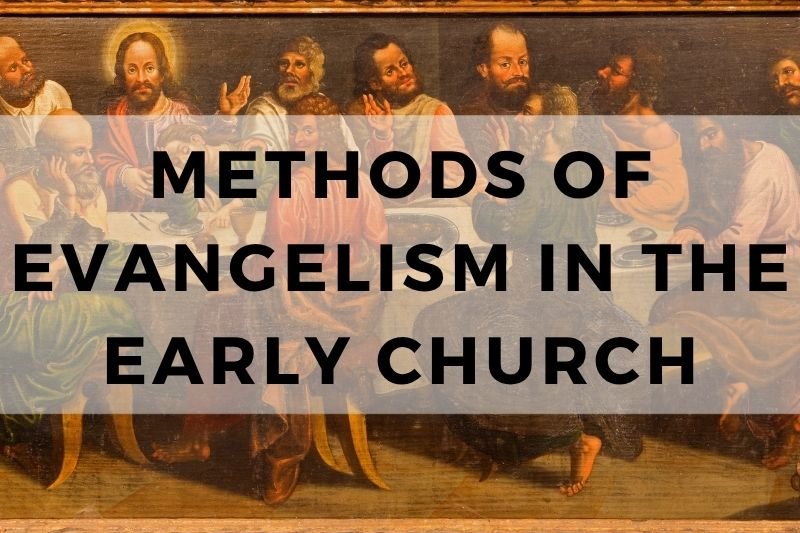
What causes a small band of ordinary people to spark a global spiritual movement that transcends time and culture? The early church’s explosive growth was no accident—it was fueled by intentional, Spirit-empowered methods of evangelism. Amid persecution, poverty, and political opposition, early believers boldly proclaimed the gospel using strategies both simple and profound. Their approach wasn’t confined to pulpits or temples; it spread through homes, marketplaces, letters, and lives lived in radical community. Understanding the methods of evangelism in the early church reveals powerful, timeless truths for sharing Christ in today’s world. This article explores the foundational practices that shaped Christian outreach from the very beginning.
An Introduction to Evangelism in the Early Church
Evangelism in the early church was not a formalized program but a way of life. The message of Jesus was spread through personal relationships, public declarations, and everyday actions. The apostles and early believers were driven by a deep conviction that the gospel was urgent and life-transforming. They operated in hostile environments, yet their witness was bold, persistent, and culturally adaptable.
The early church’s methods of evangelism were practical, Spirit-led, and deeply relational. Rather than relying on institutions or mass media, they leveraged face-to-face communication, communal living, and visible acts of faith. Their success lay in their commitment to making disciples, not just converts. This foundation offers modern believers timeless insight into evangelism that goes beyond trends and focuses on genuine gospel impact.
Common Methods of Evangelism in the Early Church
#1. Personal Testimony
Early Christians shared their own encounters with Jesus to explain the gospel. This method required no formal training—just honesty, conviction, and a transformed life. Converts like Paul used their radical transformation as evidence of God’s power and grace. These testimonies were relatable and persuasive, often sparking curiosity and deeper conversation. Personal testimony was powerful because it put a face to the gospel and proved its relevance. It connected theological truths to real-world experiences. The early church multiplied as believers spoke of healing, forgiveness, and hope in everyday conversations across towns and cities.
#2. House-to-House Ministry
Evangelism often took place in homes, where believers broke bread and taught the faith in intimate settings. This practice allowed deeper discipleship, personal interaction, and accountability. Hospitality became a gateway for gospel conversations. House-to-house ministry allowed for relational evangelism that built trust and spiritual depth. It offered a space free from public scrutiny or opposition, especially useful during persecution. The church in Acts is described as meeting daily in homes, showing that households were mission fields. These gatherings laid the groundwork for local churches and sustained long-term spiritual growth.
#3. Discipleship
Rather than focus solely on conversion, early Christians emphasized following Jesus in daily life. New believers were taught how to pray, understand Scripture, and obey Christ. Discipleship was life-on-life, often involving mentorship and imitation. Paul’s relationship with Timothy is a clear example. Discipleship ensured that converts became mature, multiplying believers. It created strong, resilient communities rooted in truth and accountability. This method prevented shallow faith and helped spread the gospel sustainably. Leaders didn’t rely on emotional responses but invested in people’s growth, shaping long-term witnesses for Christ.
#4. Public Preaching
Preaching in synagogues, marketplaces, and streets was central to apostolic evangelism. Peter preached at Pentecost, Paul in Athens, and Stephen before the Sanhedrin. These messages were bold, direct, and scripturally grounded. Public preaching allowed the gospel to reach large, diverse audiences quickly and clearly. It declared Jesus as the Messiah using familiar Old Testament texts. Though it sometimes provoked persecution, it was also catalytic—many were convicted and baptized on the spot. This method demonstrated that evangelism could be both confrontational and compassionate, challenging public thought with gospel truth.
#5. Festival Participation
Jewish and Greco-Roman festivals drew massive crowds, offering opportunities for gospel proclamation. The apostles often timed their ministry around these gatherings. For example, Pentecost became a launchpad for global evangelism. Engaging festivals allowed Christians to evangelize within existing cultural rhythms. These events provided visibility and access to people from various regions and backgrounds. Believers could share the gospel through hospitality, dialogue, and public acts of worship. By entering these spaces, early Christians didn’t isolate themselves—they immersed themselves in the culture to bring Christ to the center.
#6. Miracles and Signs
Miracles authenticated the gospel message and confirmed the authority of the messengers. Healings, exorcisms, and supernatural signs followed the apostles, drawing attention and prompting faith. Acts repeatedly links conversions with divine acts. Miracles and signs served as visible proof that the gospel carried divine power. They opened doors for preaching and demonstrated that God was actively involved in human affairs. While not ends in themselves, these miracles often prepared hearts to believe. The early church didn’t rely on persuasion alone but partnered proclamation with demonstration, showcasing God’s kingdom in action.
#7. Letters and Epistles
The apostles wrote letters to churches and individuals, addressing theological concerns and offering guidance. These writings were read aloud in gatherings and copied for distribution. Paul’s epistles, for instance, shaped doctrine and corrected errors. Letters and epistles allowed consistent evangelistic teaching across geographic and cultural boundaries. They reinforced the message and built unity among scattered believers. These documents ensured continuity in belief and practice, especially in the absence of apostolic presence. Their clarity, authority, and spiritual insight made them central to both evangelism and discipleship in the growing church.
#8. Parables and Stories
Like Jesus, early Christians used relatable stories to convey deep truths. These parables made complex ideas simple and memorable. They resonated with both educated and uneducated listeners. Parables and stories made the gospel accessible, helping listeners grasp spiritual realities through everyday imagery. They encouraged reflection and often provoked a response. In a society dependent on oral tradition, storytelling was a strategic tool. It helped preserve the message and inspire sharing. Even in hostile environments, stories communicated the gospel in ways that were indirect yet deeply penetrating.
#9. Community Living
The early church lived in close fellowship, sharing possessions and meeting daily. Acts 2 and 4 describe believers as one in heart and mind, caring for each other’s needs. This radical lifestyle amazed outsiders. Community living was a living testimony of gospel transformation and love. It drew attention by contrasting with the individualism and inequality of surrounding cultures. People saw the gospel at work—not just heard it. Evangelism wasn’t limited to words; it was visible in how believers lived, forgave, and gave. Their unity and compassion made the gospel tangible.
#10. Engaging All Social Classes
The gospel was shared with Jews and Gentiles, rich and poor, slaves and free. The early church didn’t limit outreach to one group. Instead, it actively crossed social boundaries. Paul preached in synagogues, homes, and even to Roman officials. Engaging all social classes showed that the gospel was for everyone, regardless of status. It dismantled cultural hierarchies and created a new identity in Christ. This inclusiveness gave credibility to the gospel’s claim of universal relevance. Evangelism wasn’t reserved for the elite—it touched every layer of society, building a diverse church.
#11. Martyrdom
Persecution often resulted in death, but early Christians didn’t recant. They viewed martyrdom as a final act of witness. Their courage under torture or execution stunned onlookers. Martyrdom powerfully demonstrated the truth and worth of the gospel. It proved that believers valued Christ above life itself. Tertullian famously said, “The blood of the martyrs is the seed of the church.” Rather than silence the message, martyrdom inspired faith and spread the gospel. Spectators often became believers, moved by the martyrs’ peace, forgiveness, and unwavering hope in eternity.
#12. Baptism as Witness
Baptism marked public identification with Christ. In hostile environments, this act often led to social rejection or persecution. Still, believers embraced it joyfully. Baptism was a bold, public declaration of faith that often sparked curiosity and gospel conversations. It was both symbolic and strategic, visibly demonstrating a life changed by Christ. Early Christians didn’t treat baptism lightly—it was a spiritual milestone and evangelistic moment. It signified entry into a new community, one that was rooted in grace, holiness, and purpose. As such, it served as both a witness and an invitation.
#13. Prayer and Spiritual Support
The early church was deeply rooted in prayer. Before major decisions, evangelistic efforts, or during persecution, believers prayed. They prayed corporately and privately, interceding for boldness and open doors. Prayer empowered evangelism and aligned believers with the Holy Spirit’s leading. It wasn’t an afterthought—it was central. Miracles, conversions, and courage often followed seasons of prayer. Paul regularly requested prayer for his mission. This practice reminded the church that success in evangelism was not human-driven but divinely enabled. Spiritual support was foundational, keeping the mission focused and effective.
#14. Use of Common Languages
Greek was widely spoken across the Roman Empire, allowing the gospel to spread quickly. The apostles also used Aramaic and Hebrew when appropriate. Language was a bridge, not a barrier. Using common languages enabled the gospel to reach diverse audiences with clarity and speed. This linguistic adaptability showed cultural sensitivity and increased understanding. It allowed Scripture to be read aloud and letters to be circulated broadly. Early Christians prioritized accessibility—they didn’t confine the gospel to religious jargon. Instead, they translated truth into everyday terms that people could grasp.
#15. Leadership by Apostles
The apostles played a central role in teaching, organizing, and spreading the gospel. They were eyewitnesses of Christ, commissioned directly by Him. Their authority ensured doctrinal purity and strategic direction. Apostolic leadership provided theological clarity and missionary momentum in the early church. They trained others, resolved conflicts, and planted churches. Their presence and writings anchored the faith during its formative years. With their guidance, evangelism was not chaotic—it was structured, intentional, and Spirit-led. This leadership ensured that the church remained unified in message and mission across regions.
Closing Thoughts
The methods of evangelism in the early church were diverse yet deeply unified in purpose: to proclaim Christ and make disciples. Rooted in prayer, empowered by the Spirit, and lived out in community, these approaches were practical, relational, and transformative. They engaged people across cultures, classes, and circumstances without compromise. Today’s church can learn much from these early practices—not by replicating them mechanically, but by embracing their spirit of boldness, love, and intentionality. Evangelism remains a call to live and speak the gospel with clarity, compassion, and conviction, just as the early believers faithfully did in their time.
